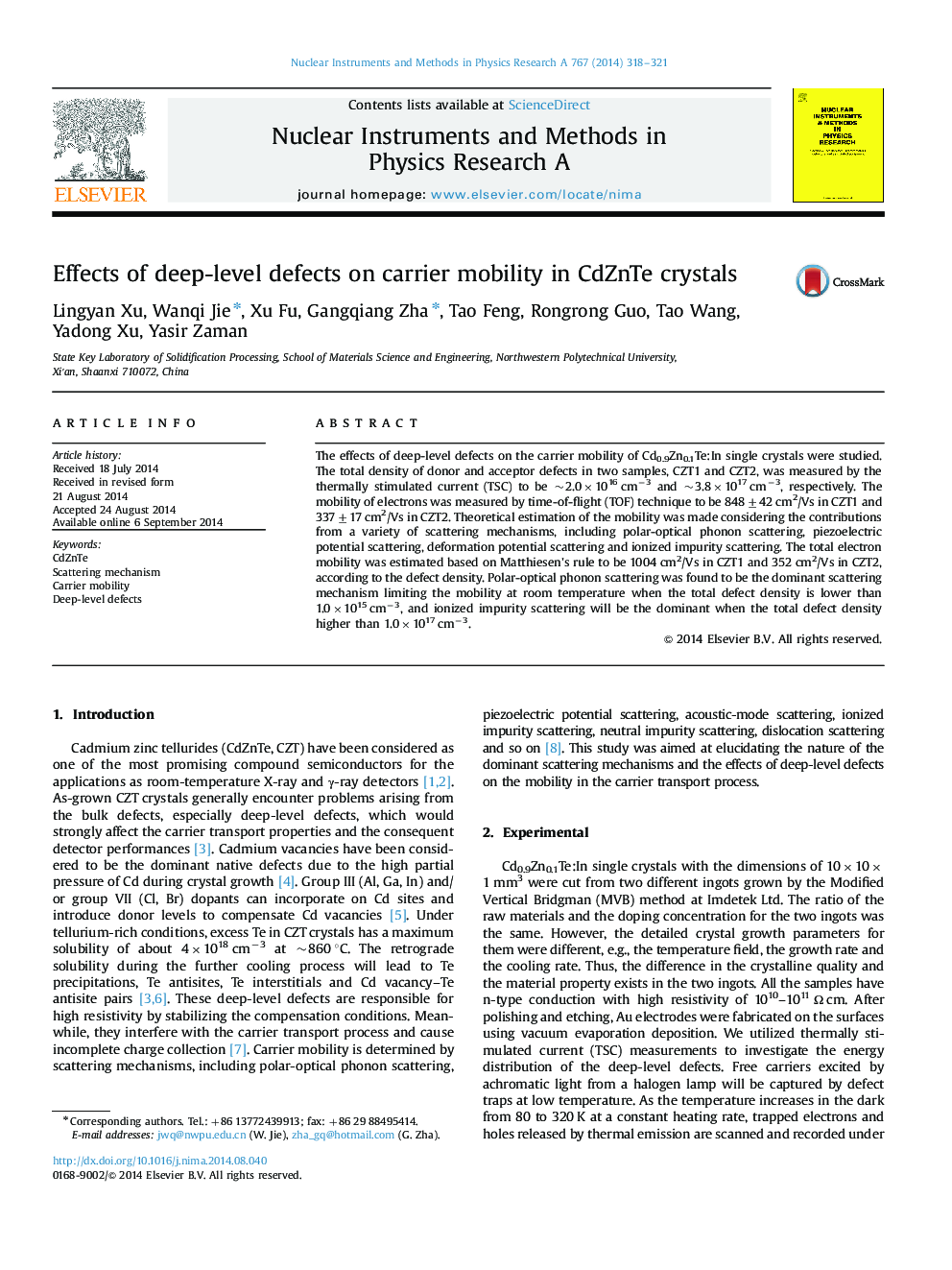| Article ID | Journal | Published Year | Pages | File Type |
|---|---|---|---|---|
| 8175169 | Nuclear Instruments and Methods in Physics Research Section A: Accelerators, Spectrometers, Detectors and Associated Equipment | 2014 | 4 Pages |
Abstract
The effects of deep-level defects on the carrier mobility of Cd0.9Zn0.1Te:In single crystals were studied. The total density of donor and acceptor defects in two samples, CZT1 and CZT2, was measured by the thermally stimulated current (TSC) to be ~2.0Ã1016 cmâ3 and ~3.8Ã1017 cmâ3, respectively. The mobility of electrons was measured by time-of-flight (TOF) technique to be 848±42 cm2/Vs in CZT1 and 337±17 cm2/Vs in CZT2. Theoretical estimation of the mobility was made considering the contributions from a variety of scattering mechanisms, including polar-optical phonon scattering, piezoelectric potential scattering, deformation potential scattering and ionized impurity scattering. The total electron mobility was estimated based on Matthiesen׳s rule to be 1004 cm2/Vs in CZT1 and 352 cm2/Vs in CZT2, according to the defect density. Polar-optical phonon scattering was found to be the dominant scattering mechanism limiting the mobility at room temperature when the total defect density is lower than 1.0Ã1015 cmâ3, and ionized impurity scattering will be the dominant when the total defect density higher than 1.0Ã1017 cmâ3.
Related Topics
Physical Sciences and Engineering
Physics and Astronomy
Instrumentation
Authors
Lingyan Xu, Wanqi Jie, Xu Fu, Gangqiang Zha, Tao Feng, Rongrong Guo, Tao Wang, Yadong Xu, Yasir Zaman,
